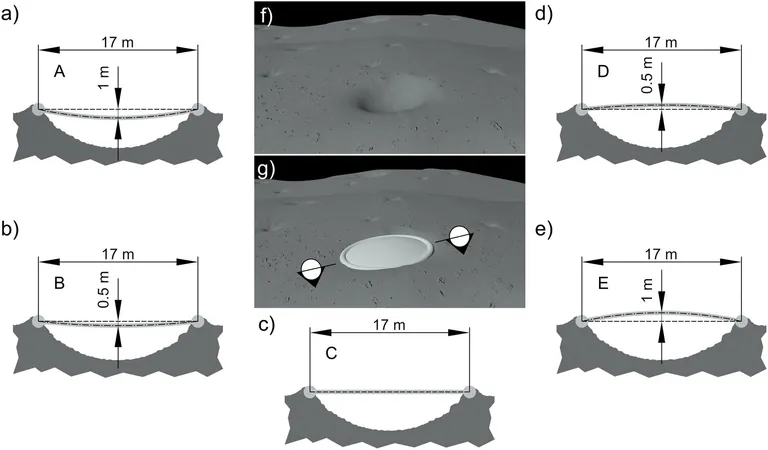
Building the Moon: How a Dome of Regolith Could Start Our Lunar Base
2025-07-14
Author: Ming
From Fiction to Reality: A New Era of Lunar Exploration
The dream of establishing lunar habitats transitioned from science fiction to scientific realism with NASA's Apollo missions. As space agencies gear up for new crewed missions to the Moon over the next decade, the focus is back on building sustainable lunar infrastructures. NASA's Artemis Program aims to create a base for ongoing lunar science and development, while China and the ESA are working on their own ambitious projects like the International Lunar Research Station and the Moon Village.
Harnessing Lunar Resources: The Smart Path Forward
To minimize the logistics of sending materials from Earth, future lunar habitats will leverage in-situ resource utilization (ISRU). Recent research from an international team of scientists, including those from Poland and the UK, proposes a groundbreaking approach: constructing a dome using lunar regolith-based geopolymers—a solution that could pave the way for the first bases on the Moon.
Innovative Design for a Bright Lunar Future
Led by Magdalena Mrozek from the Silesian University of Technology, the study presents a visionary design involving a dome that would cover a 17-meter diameter crater in the Mare Tranquillitatis region. This location not only offers a wealth of scientific potential due to Apollo samples but also ensures protection from meteoroids, making it an ideal site for habitation.
Geopolymers: The Building Blocks of Our Lunar Base
The proposed habitat aims to utilize local materials efficiently by constructing a covering lid over the crater, significantly cutting down on the resources needed for construction. The research team analyzed the structural integrity required to maintain Earth-like atmospheric pressure within the habitat, selecting lunar regolith-based geopolymers for their durability and compatibility with available lunar materials.
Crafted for the Moon: Testing Geopolymers Under Lunar Conditions
Using simulants of lunar regolith, the team created a geopolymer solution, vital for upcoming construction efforts on the Moon. Simulations of lunar conditions were employed, where samples were tested in a thermal vacuum chamber that mimics the extreme Moon temperatures ranging from scorching heat to frigid cold.
The Future of Lunar Living: Research and Collaboration
The success of this innovative geopolymer opens doors for constructing durable lunar bases, vital for the objectives of NASA’s Artemis Program. Mrozek emphasized the interdisciplinary nature of this research, which includes collaboration with experts in architecture, geology, and physics. The groundwork is being laid for a comprehensive project that takes humanity one step closer to permanent lunar habitation.
The Moon Is Calling: A New Frontier Awaits
With a vision of building sustainable habitats on the Moon fueled by innovative materials and international collaboration, the dream is inching closer to reality. As research continues, humanity stands on the brink of a new era in space exploration—marking the Moon not just as a destination, but as a home.



 Brasil (PT)
Brasil (PT)
 Canada (EN)
Canada (EN)
 Chile (ES)
Chile (ES)
 Česko (CS)
Česko (CS)
 대한민국 (KO)
대한민국 (KO)
 España (ES)
España (ES)
 France (FR)
France (FR)
 Hong Kong (EN)
Hong Kong (EN)
 Italia (IT)
Italia (IT)
 日本 (JA)
日本 (JA)
 Magyarország (HU)
Magyarország (HU)
 Norge (NO)
Norge (NO)
 Polska (PL)
Polska (PL)
 Schweiz (DE)
Schweiz (DE)
 Singapore (EN)
Singapore (EN)
 Sverige (SV)
Sverige (SV)
 Suomi (FI)
Suomi (FI)
 Türkiye (TR)
Türkiye (TR)
 الإمارات العربية المتحدة (AR)
الإمارات العربية المتحدة (AR)